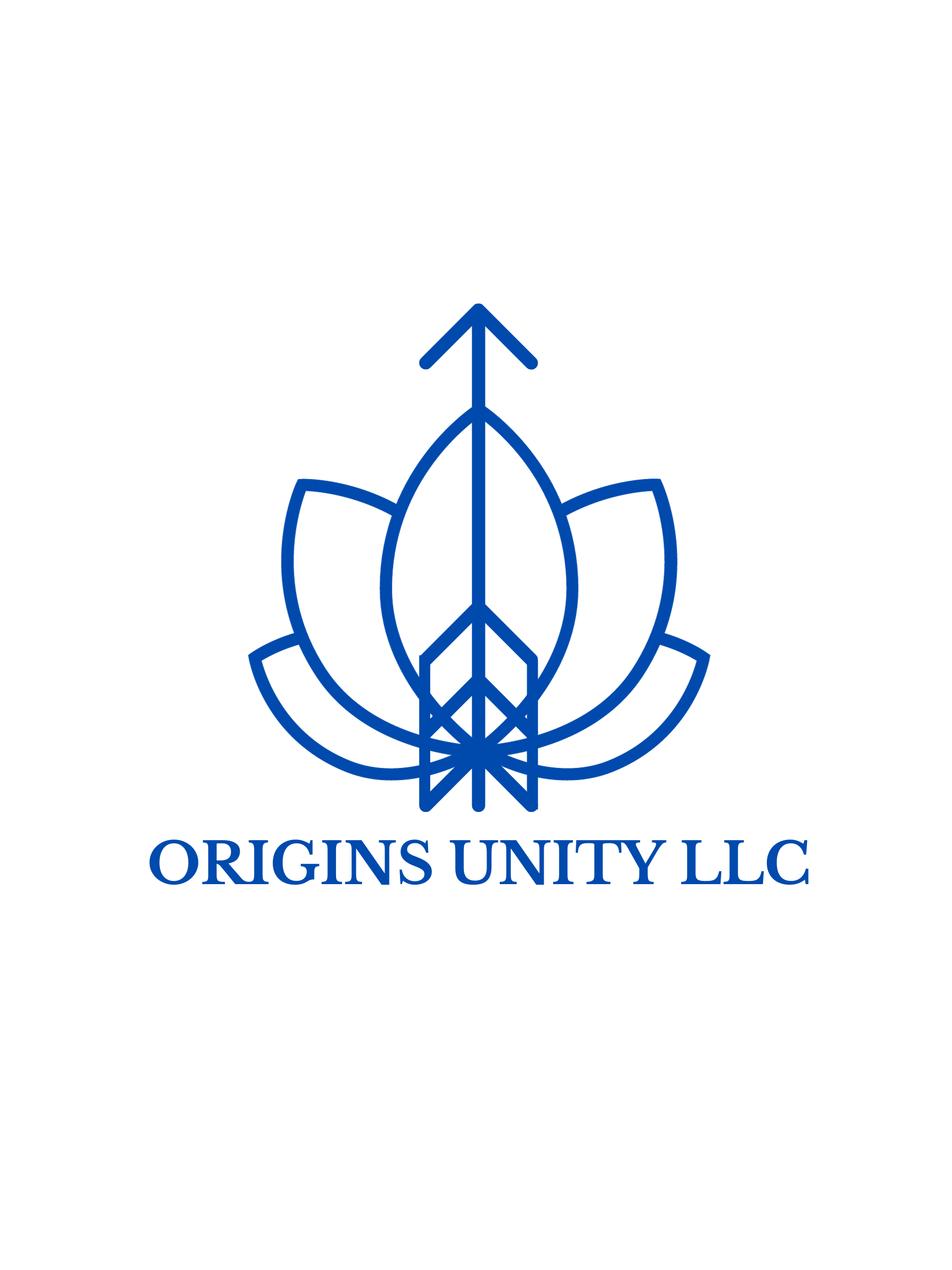Origins Unity LLC Gym Yoga Studio Meditation unites fitness and mindfulness for all your wellbeing needs.
10+ Ways to Improve Occupational Wellness in Your Organization

How Can We Enhance Occupational Wellness for Greater Satisfaction at Work
We all want a fulfilling and balanced life, but, in striving for this, some of us focus solely on aspects such as physical health, mental well-being, and relationships. Those are important priorities. However, one other crucial element that contributes significantly to holistic living and overall life satisfaction is how we feel about our economic standing and work environment. Our Occupational Wellness encompasses how we engage with our job, align it with our values and passions, and maintain a healthy work-life balance. It can resemble:
An ergonomic workstation.
Optimizing time management skills.
Ensuring a manageable workload to prevent burnout.
Respecting scheduled work hours and avoiding overwork.
Being aware of employment opportunities and how to access them.
Cultivating positive work habits such as reliability and taking initiative.
Maintaining a balance between work, leisure, and other life commitments.
Exploring engaging paid or volunteer activities aligned with your interests.
Seizing opportunities for skill development that can improve your current or future career prospects.
What Does the Data Say about Work-Life Balance?
Work-Life Balance:
- According to a survey by the American Psychological Association, 65% of employed adults in the United States say that work is a major source of stress in their lives.
- The World Health Organization reports that long working hours contribute to approximately 745,000 deaths from stroke and ischemic heart disease each year.
- The National Sleep Foundation reports that 77% of employed Americans say that they often feel tired at work.
Stress at Home:
- A study by Gallup found that 45% of Americans frequently experience stress in their daily lives.
- The American Institute of Stress states that job pressure is the leading cause of stress in the United States, followed by financial worries and health concerns.
Occupational Wellness:
- The National Institute for Occupational Safety and Health (NIOSH) reports that work-related stress is associated with increased absenteeism, lower productivity, and higher healthcare costs for employers.
- The World Health Organization estimates that depression and anxiety disorders cost the global economy $1 trillion per year in lost productivity.
- The Centers for Disease Control and Prevention (CDC) states that job stress is associated with increased risk for health conditions such as heart disease, musculoskeletal disorders, and mental health disorders.
- A study published in the Journal of Occupational and Environmental Medicine found that companies with comprehensive workplace wellness programs saw a $3.27 return on investment for every dollar spent on wellness initiatives.
Understanding Occupational Health and Employee Well-being
Occupational wellness is more than just having a job; it’s about finding meaning, fulfillment, and purpose in our work. When we prioritize occupational wellness, we invest in our professional growth, nurture our talents and skills, and create a sense of purpose in our daily work activities.
Occupational health focuses on physical safety and wellness at work, addressing factors like workplace hazards, ergonomics, and injury prevention.
Employee well-being encompasses broader aspects such as mental, emotional, and social health in the workplace, including job satisfaction, work-life balance, stress management, and career development.
Occupational wellness specifically refers to achieving a sense of reward and enjoyment, aligning with personal values and goals, and maintaining a healthy work-life balance. It encompasses both psychological safety and overall well-being to promote a positive and productive work environment.
 s
sThe Benefits of Occupational Wellness for Holistic Wellness
- Career Satisfaction: Feeling content and fulfilled in our chosen career path, whether it’s through advancement opportunities, recognition, or personal development.
- Work-Life Balance: Striking a harmonious balance between work commitments and personal life to avoid burnout and maintain overall well-being.
- Healthy Work Environment: Having a supportive and positive workplace culture that promotes collaboration, communication, and work-life integration. Ergonomics are included.
- Professional Growth: Continuously learning, growing, and evolving in our careers by seeking new challenges, acquiring new skills, and pursuing opportunities for advancement.
- Workplace Relationships: Cultivating positive relationships with colleagues, supervisors, and clients to foster a sense of belonging and teamwork.
- Alignment with Values: Ensuring that our work aligns with our core values, beliefs, and passions, leading to a greater sense of purpose and contentment.
Why is Occupational Wellness Important for Your Wellness Program
- Enhanced Well-Being: When we prioritize occupational wellness, we experience reduced stress levels, increased job satisfaction, and a greater sense of overall well-being.
- Improved Productivity: A healthy work-life balance and a positive work environment contribute to increased productivity, creativity, and efficiency in our professional endeavors.
- Better Mental Health: Occupational wellness plays a crucial role in promoting mental health by reducing work-related stress, anxiety, and burnout while enhancing creativity and collaboration.
- Greater Satisfaction and Morale: When our work aligns with our values and passions, we experience a deeper sense of purpose while boosting morale and maintaining a strong vision.
- Balanced and Sustainable Lifestyle: Achieving occupational wellness allows us to create a balanced lifestyle that prioritizes both professional success and personal development in a practical manner.

Tips for Improving Occupational Wellness
Whether you’re at the office or working from home, there are plenty of ways to boost your occupational wellness and make your work life more enjoyable. Here are some practical tips to enhance your well-being, no matter where you work!
In the Office:
- Personalize Your Space: Add personal touches to your workspace, like indoor plants, to reduce stress and create a more comfortable environment.
- Upgrade Ergonomics: Invest in ergonomic furniture like chairs and desks to improve comfort, productivity, and reduce the risk of strain injuries.
- Set Goals: Stay engaged by setting personal and professional goals, whether it’s completing a project or aiming for a promotion.
- Establish Boundaries: Know your limits, communicate clearly with colleagues and managers, and maintain a healthy work-life balance to avoid burnout.
Working from Home:
- Create a Dedicated Workspace: Set up a designated area in your home for work to separate your professional and personal life effectively.
- Set Boundaries: Stick to a schedule and establish clear boundaries to prevent overworking and maintain a healthy balance.
- Schedule Downtime: Take breaks and schedule downtime to avoid burnout and resentment toward your job.
- Consider a Wellness Program: Explore wellness programs that promote health, wellness, and self-care strategies to improve overall well-being.
Enhancing your occupational wellness is essential for a fulfilling and rewarding work experience. By implementing these tips, you can create a more positive and enjoyable work environment, whether you’re in the office or working remotely.

Signs of Poor Occupational Wellness in the Workplace Health
Signs of poor occupational wellness often manifest as feelings of burnout, chronic stress, and dissatisfaction with work. Staff and the environment can become disorganized, wasteful, hazardous, or toxic. From an individual health perspective, it can be felt as physical symptoms like fatigue, headaches, and sleep disturbances, as well as emotional indicators such as irritability, lack of motivation, and feelings of overwhelm. This is how companies go bankrupt or cause major problems in the world. Poor work-life balance, excessive workload, aches and pains, lack of job satisfaction, and strained relationships with coworkers or supervisors are common signs.
Recognizing these signs early can help individuals take steps to improve their occupational wellness and overall well-being. It doesn’t feel good to be in the wrong place, so we must do our best to find a scenario that works for us.
Ways to Improve Occupational Wellness in the Workplace
Occupational wellness is a fundamental pillar of holistic living and life satisfaction. We need to take time as individuals and organizations to define and understand our values and ensure we are covering the major domains.
By prioritizing meaningful work, maintaining a healthy work-life balance, acknowledging ergonomics, and nurturing professional growth, we can experience enhanced well-being, improved productivity, and a much higher quality of life.
Cultivating occupational wellness requires a proactive approach, self-awareness, and a commitment to aligning our work with our skills, values, and what we have access to. Ultimately, investing in occupational wellness contributes to a balanced, fulfilling, and purposeful life journey.
Origin’s Unity is your trusted guide to ensuring that you will thrive by carefully outlining what occupational wellness means to you and following a realistic plan to achieve and maintain this.

12 Transformative Health Benefits of QiGong: Unlocking Harmony
You may have heard about Tai Chi but now, let’s learn about the powerful health benefits of QiGong, a similar ancient Eastern practice combining movement, meditation, and breath control. The practice has gained immense popularity for its transformative effects on physical, mental, and spiritual well-being.
Imagine starting your day with a gentle flow of movements that awaken your body, invigorate your mind, and calm your spirit. Picture feeling more energized, focused, and resilient as you navigate through the challenges of modern life. This is the promise of QiGong – a practice that has stood the test of time and continues to empower countless individuals on their paths to well-being.
In this comprehensive guide, we’ll delve deep into the heart of QiGong, exploring its myriad benefits that go beyond physical fitness. From enhancing cardiovascular health and boosting immune function to sharpening mental clarity and fostering inner peace, QiGong offers a holistic approach to wellness that resonates with people from all walks of life.

Learn More About QiGong Practice is:
Qi Gong, often referred to as “energy work,” is rooted in traditional Chinese medicine and Taoist philosophy. It revolves around the concept of Qi, or vital energy, flowing through the body’s energy channels (meridians) to maintain health and harmony. Through gentle movements, breathwork, and mindfulness, Qi Gong aims to cultivate and balance Qi, promoting overall vitality and longevity. It is a low-impact exercise safe for all levels that has a high-impact return on investment and is easy to create a manageable routine around. There are a vast array of benefits making this mind-body practice invaluable and sought-after.
The 12 Transformative Health Benefits of Qi Gong:
- Improved cardiovascular health: Regular Qi Gong practice has been shown to improve heart health by increasing cardiovascular endurance, improving circulation, and lowering blood pressure.
- Enhanced immune function: Qi Gong helps to strengthen the immune system by promoting the flow of Qi (vital energy) throughout the body, supporting the body’s natural defenses against infections and illnesses.
- Supports digestion: Qi Gong exercises can aid in improving digestion by promoting relaxation, reducing stress-related digestive issues, and enhancing the function of the digestive organs.
- Improves respiratory function: Qi Gong practices often incorporate deep breathing techniques that can strengthen the respiratory muscles, increase lung capacity, and improve overall respiratory function.
- Enhances musculoskeletal health: The gentle movements and stretches in Qi Gong help to improve flexibility, strengthen muscles, and promote joint health, reducing the risk of musculoskeletal injuries.
- Balances hormonal levels: Qi Gong practice can help balance hormonal levels by reducing stress hormones like cortisol and promoting the release of endorphins and other feel-good hormones.
- Boosts cognitive function: Regular Qi Gong practice has been linked to improved cognitive function, including better memory, mental clarity, and increased focus and concentration.
- Improves memory and mental focus: Qi Gong exercises that involve mindful movements and concentration can enhance memory retention, mental acuity, and overall cognitive performance.
- Regulates emotions and reduces stress: Qi Gong promotes emotional regulation by reducing stress, anxiety, and mood swings. It helps individuals manage their emotions more effectively and achieve a greater sense of calm and balance.
- Promotes spiritual growth and inner peace: Many practitioners find that Qi Gong fosters a deeper connection with themselves and the universe, leading to spiritual growth, inner peace, and a greater sense of purpose and fulfillment.
- Supports healthy aging and longevity: Qi Gong practices are associated with healthy aging, promoting vitality, resilience, and overall quality of life in older adults.
- Fosters resilience and adaptability in life’s challenges: Qi Gong teaches practitioners to cultivate resilience, adaptability, and a balanced approach to life’s challenges, leading to greater emotional strength and well-being.
Health and Wellness Benefits of QiGong According to Science:
- Improved cardiovascular health: Harvard Health Publishing – Harvard Medical School
- Enhanced immune function: Journal of Alternative and Complementary Medicine
- Supports digestion: Journal of Evidence-Based Integrative Medicine
- Improves respiratory function: Respiratory Care
- Enhances musculoskeletal health: Journal of Exercise Rehabilitation
- Balances hormonal levels: Evidence-Based Complementary and Alternative Medicine
- Boosts cognitive function: Frontiers in Psychology
- Improves memory and mental focus: Journal of Exercise Science & Fitness
- Regulates emotions and reduces stress: Journal of Psychosomatic Research
- Promotes spiritual growth and inner peace: The International Journal of Transpersonal Studies
- Supports healthy aging and longevity: International Journal of Aging and Human Development
- Fosters resilience and adaptability in life’s challenges: Frontiers in Psychiatry
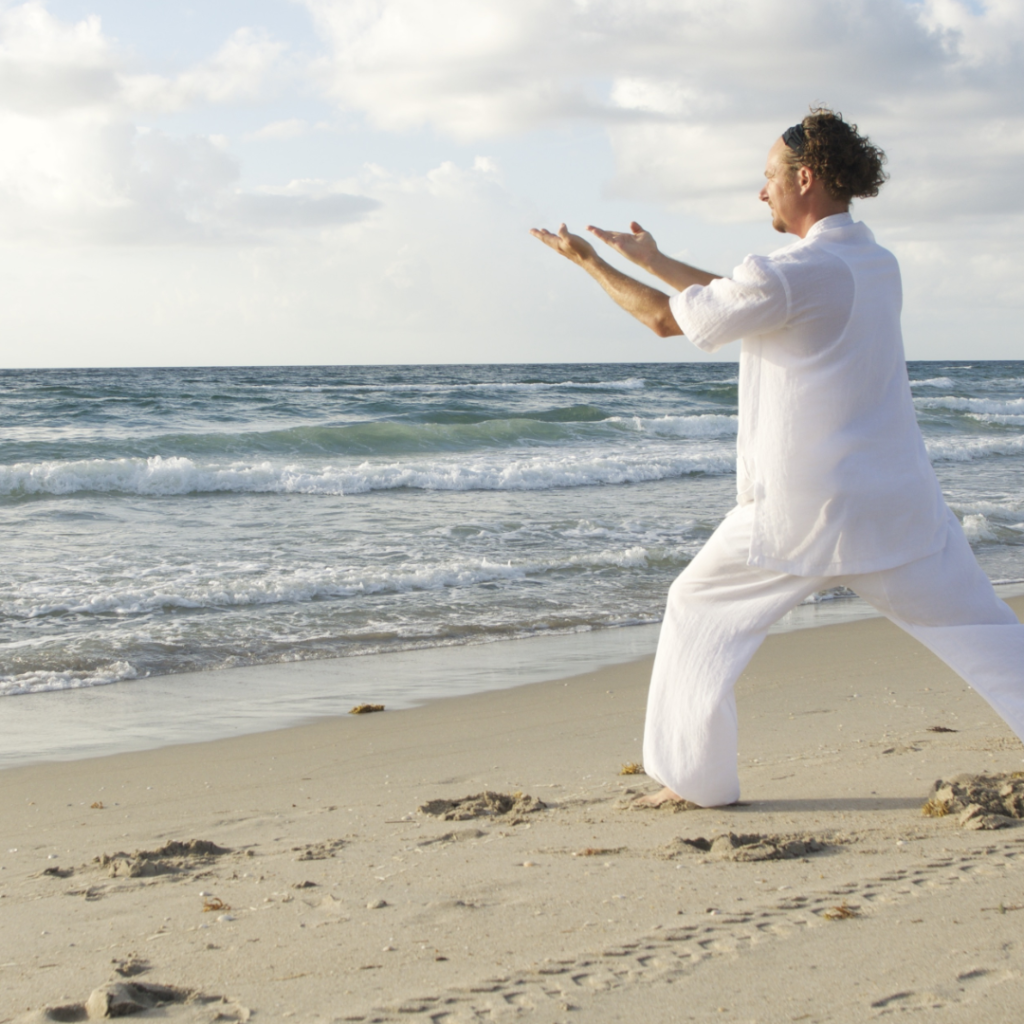
What’s the Difference Between Tai Qi and Qi Gong?
Tai Chi and Qi Gong are both ancient practices rooted in optimizing energy flow throughout the body, mind, and spirit. Qi Gong encompasses a variety of practices, with Tai Chi being one of its forms. Both involve gentle movements, postures, and breathwork aimed at enhancing mental focus, relaxation, and overall well-being. These exercises can be adapted for different settings, such as walking, standing, or sitting. Tai Chi can be thought of as more of an exercise form with emphasis on the physical component.
The key distinction lies in Tai Chi’s potential for self-defense when performed at a faster pace. Originating as a martial art in ancient China, Tai Chi has evolved to emphasize health benefits and rehabilitation for practitioners. In a health-focused context, Tai Chi is often classified as a form of Qi Gong. From a clinical standpoint, both Tai Chi and Qi Gong are viewed as moving meditations within the framework of traditional Chinese medicine, offering similar benefits for holistic health and wellness.
Some say that qigong is used to address ailments and dysfunctions (more specifically) through a holistic and systematic means. On the other hand, Tai Chi is a more generalized practice that incorporates the movement of the whole body. Qigong is also considered the more ancient discipline that many elements of Tai Chi are based on. QiGong goes deeper and is more potent and can offer greater benefit when understood properly and while engaging with the entirety of the holistic health system it is built upon.
Is QiGong Similar or the Same as Yoga?
Yoga and Qigong are ancient practices that promote physical and mental well-being, yet they diverge significantly in their cultural roots, physical demands, and philosophical orientations.
Originating in ancient India, yoga is deeply intertwined with Indian philosophy and spiritual traditions. Its practice encompasses a wide array of physical postures (asanas), breath control (pranayama), meditation, and ethical principles aimed at uniting mind, body, and spirit (yoga means yoking with the union and returning to the source and origin of conscious being).
Yoga poses often require strength, flexibility, balance, and endurance, with practitioners holding poses for extended periods to focus on alignment, breath control, and mindfulness. There is greater physical demand in yoga and qigong is often a safer alternative.
On the other hand, Qigong traces its origins to China, rooted in traditional Chinese medicine (TCM) and Taoist philosophy. It centers on cultivating and balancing Qi (vital energy) through gentle movements, breathwork, meditation, and visualization.
Qigong’s movements are slower, gentler, and less physically demanding compared to yoga poses, emphasizing fluidity, relaxation, and the harmonious flow of Qi. This accessibility and adaptability make Qigong an attractive option for individuals of varying fitness levels, with modifications available for those with physical limitations or difficulties in standing for extended periods.
Can Qigong Help Prevent Falls?
A 2019 survey of reviews has found sufficient evidence to support the use of qigong for balance training and fall prevention. When compared to more traditional interventions, qigong was found to have similar and sometimes better effects. So, practicing qigong may indeed help prevent falls.
Remember, maintaining balance and stability is crucial for overall well-being, especially as we age. Incorporating practices like qigong into your routine can contribute to better physical health and reduce the risk of falls.
My Own Personal Experiences:
As someone who has embraced Qi Gong in my daily routine, I can attest to its profound impact on my life. Qi Gong has been my number one practice over the decades and has truly given me my life back. It has repaired me physically (from severe work injury and pain), mentally (from cognitive challenges and stress), and on a deeply personal level (spiritual in the sense that it has allowed me to better relate to myself, others and my environment). This is one of the most sustainable holistic health practices available to us and can be done without equipment.
The gentle yet powerful movements, combined with focused breathing and mindfulness, has brought me a sense of inner calm, clarity, and vitality. I’ve noticed improvements in my physical health, including better digestion, reduced stress levels, and increased energy. Mentally, Qi Gong has sharpened my focus, enhanced my memory, and helped me manage emotions more effectively. Spiritually, it has deepened my connection with myself and the world around me, fostering a deeper sense of ongoing purpose, resilience, and organization.
Get Started with QiGong:
Qi Gong is not just an exercise; it’s a holistic practice that encompasses physical, mental, emotional, and personal well-being. Its benefits extend beyond the individual, promoting harmony within and around us in all that we do. Whether you’re seeking to improve your health, find inner peace, better relate to others or embark on a journey of self-discovery, Qi Gong offers a transformative path towards holistic wellness in a very accessible manner.
Unlock the power of Qi Gong and embark on a journey of vitality, clarity, and harmony. Your mind, body, and spirit will thank you for it.
Reach out to start you practice today!
The 6 Practice Proven Path to Holistic Wellness and Wholeness Within
The 6 Practice Proven Path to Holistic Wellness and Wholeness Within to Nurture a Balance Life and Holistic Healing
Finding inner peace and wellness that works for us as individuals can often feel like an elusive pursuit. However, it is well within reach and much easier than we make it. Within the pages of “Wholeness Within: A Guide to Integrated Living and Holistic Wellness,” you will find an easy-to-follow roadmap to navigate your journey with clarity and purpose. Join us as we embark on a deep dive into the transformative practices and principles outlined in this comprehensive ebook resource.
In a world where the relentless pace of life often leaves us feeling fragmented and disconnected, the quest for wholeness has become more than a mere aspiration—it’s a necessity for navigating the complexities of modern existence.
Thankfully, amidst the noise and chaos, there exists a beacon of hope, a free guidebook filled with ancient wisdom and timeless practices that promise to illuminate the path to inner trust and holistic wellness.
Wholeness Within: A Guide to Integrated Living and Holistic Wellness, is where the journey begins, not with a destination in mind, rather, with the intention of maintaining a deep yearning to rediscover the essence of our truest selves and potential.
As you stand at the threshold of this transformative journey, envision a wealth of possibilities unfolding before you—a simplified path to mindfulness, meditation, breathwork, and earth-based practices, each offering a glimpse into the vast expanse of human potential.
If you’re ready to unlock the secrets to living a life of purpose, vitality, and fulfillment, then join us as we dive deep into the heart of holistic wellness and uncover the hidden treasures that reside within you.
Exploring Meditation for a Balanced Life:
At the heart of “Wholeness Within” lies the timeless practice of meditation. This is my number one practice and has done wonders for me over the decades. From ancient traditions to modern techniques, meditation offers a gateway to inner stability and mental clarity. We delve into various forms of meditation, including mindfulness meditation, loving-kindness, and Transcendental Meditation, each offering unique pathways to cultivate focus, reduce stress, and deepen self-awareness. Through practical exercises and insights, readers learn how to integrate meditation into their daily lives, unlocking the profound benefits of this age-old practice. You can also join our community for group meditation as this is a powerful way to practice.
Mindfulness: Cultivating Presence in Everyday Life:
Mindfulness, the cornerstone of holistic wellness at Origin’s Unity, invites us to be fully present in the moment and cultivate awareness of our thoughts, feelings, and sensations without judgment. In “Wholeness Within,” we explore the art of mindfulness and its transformative potential in various aspects of daily life. From mindful eating and movement to mindful communication and self-reflection, readers discover practical techniques to enhance their mindfulness practice and foster greater connection with themselves and the world around them.
Harnessing the Power of Breathwork and Catharsis for Natural Healing:
Breathwork and catharsis offer powerful tools for releasing tension, emotions, and stress stored within the body. Through practices like deep diaphragmatic breathing, alternate nostril breathing, journaling and expressive arts, readers learn how to tap into the body’s natural healing mechanisms and create a safe space for emotional well-being. In “Wholeness Within,” we delve into the transformative potential of breathwork and catharsis, offering easy exercises and insights to support readers on their journey to inner tranquility and emotional resilience.
Holistic Wellness Means connecting with the Earth: Exploring Earth-Based Practices:
Our connection with the Earth is fundamental to our well-being, yet it’s often overlooked in modern society. In the guide, we shine a spotlight on earth-based practices, such as gardening, forest bathing, and sustainable living, that foster a deeper sense of connection and stewardship towards the planet. We all come from the earth and cannot deny this fundamental truth of our existence. The earth has been here long before us and will be here long after us. It is essential that we respect our planet and live in harmony with the natural world. Through this lens, readers learn how to nourish their souls while supporting environmental sustainability, creating a harmonious balance between humanity and the natural world.
Holistic Healing Involves Unlocking Energy Movement and Channeling:
Energy movement and channeling, encompassing practices like yoga, qi gong and mindful movement, offer pathways to physical vitality, mental clarity, and psychological centering. The human body functions as a sophisticated network of energy channels, encompassing vital systems such as blood circulation, nerve pathways, and hormonal balance, all perpetually in motion. Practices such as yoga, qi gong, and tai chi are meticulously crafted to facilitate the harmonious flow of this energy, fostering not only physical vitality but also mental acuity and emotional equilibrium.
Holistic Health means Designing a Life of Wellness Integrating the Eight Domains:
Lifestyle design through the eight domains of wellness—physical, emotional, social, environmental, personal values, intellectual, occupational, and financial—offers a whole-person approach to well-being. In “Wholeness Within,” we guide readers through the process of aligning their lives with their deepest values and aspirations. From prioritizing physical health through nutritious eating and regular exercise to fostering emotional well-being through self-care practices and supportive relationships, readers discover practical strategies to cultivate a life that is balanced, purposeful, and fulfilling.
Origin’s Unity Approach to Wellness and the Mental Clarity:
In closing our brief summary of “Wholeness Within,” we find ourselves enriched by the profound insights and transformative practices that have illuminated our path to holistic wellness. From the depths of meditation and mindfulness to the invigorating breathwork, grounding earth-based practices, and intentional lifestyle design, each chapter has equipped us with invaluable tools and guidance for our journey towards inner tranquility, resilience, and fulfillment. As we integrate these practices and principles into our daily lives, let us remain steadfast in nurturing our mind, body, and soul, as the straight-forward practices listed in the guide are the keys to living a life of profound wholeness and sustainable well-being.
Download the Guide Now:
5 Science Backed Benefits of One Word Mindfulness Meditation

5 Science Back Benefits of One Word Mindfulness Meditation
Do you ever feel like your mind is running a marathon on a hamster wheel? You’re bombarded with information, to-do lists, and worries, leaving you feeling stressed, scattered, and disconnected from yourself. Does mindfulness and meditation sound daunting or distant from your normal routine? Do you want to embody your virtues and values but don’t how to do so without a total lifestyle overhaul? If so, you’re not alone and many of us are trying to combat these frustrations.
But what if there was a simple, accessible practice that could help you achieve just that? Enter One Word Mindfulness Meditation, a simple approach that uses the power of a single word to anchor your attention, cultivate inner peace, and guide your life.
How does a one word meditation practice create stress reduction and peace?
In genius, simplification is key. Instead of overwhelming yourself with complex mantras or techniques, or very involved visualizations and practices, focusing on a single word allows you to delve further into its meaning and resonance. This word becomes your focal point, anchoring you in the present moment and deepening your inner wellbeing. Then you can embody the word and carry the practice with you into the real world. The purpose of mindfulness and meditation is not to reach some heightened spiritual state or grand level of wisdom, or complete freedom from pain, rather it is Integrated Living and it means joyfully navigating your life journey along with the people in it.
List of Mindful Words or Mantra Meditation Examples
Immerse yourself in mindfulness with words like “forest,” “peace,” “present,” “gratitude,” or “strength.” Choose one that resonates, whether from nature, emotions, or mantras based on your personal values. Let it be your anchor as you explore your inner world with curiosity and kindness. Remember, the perfect word is the one that connects with you most deeply. Other ideas for the one word mindfulness meditation include:
- Courage, Trust, Faith, Hope, Resilience, Inner Strength, Resolve, Power, Determination.
- Breath, Heartbeat, Muscles, Sensations, Tension, Release, Movement, Flow, Energy.
- Peace, Stillness, Serenity, Quiet, Tranquility, Tranquility, Harmony, Balance, Ease, Flow.
- Present, Observe, Witness, Notice, Feel, Sense, Breathe, Open, Listen, Connect.
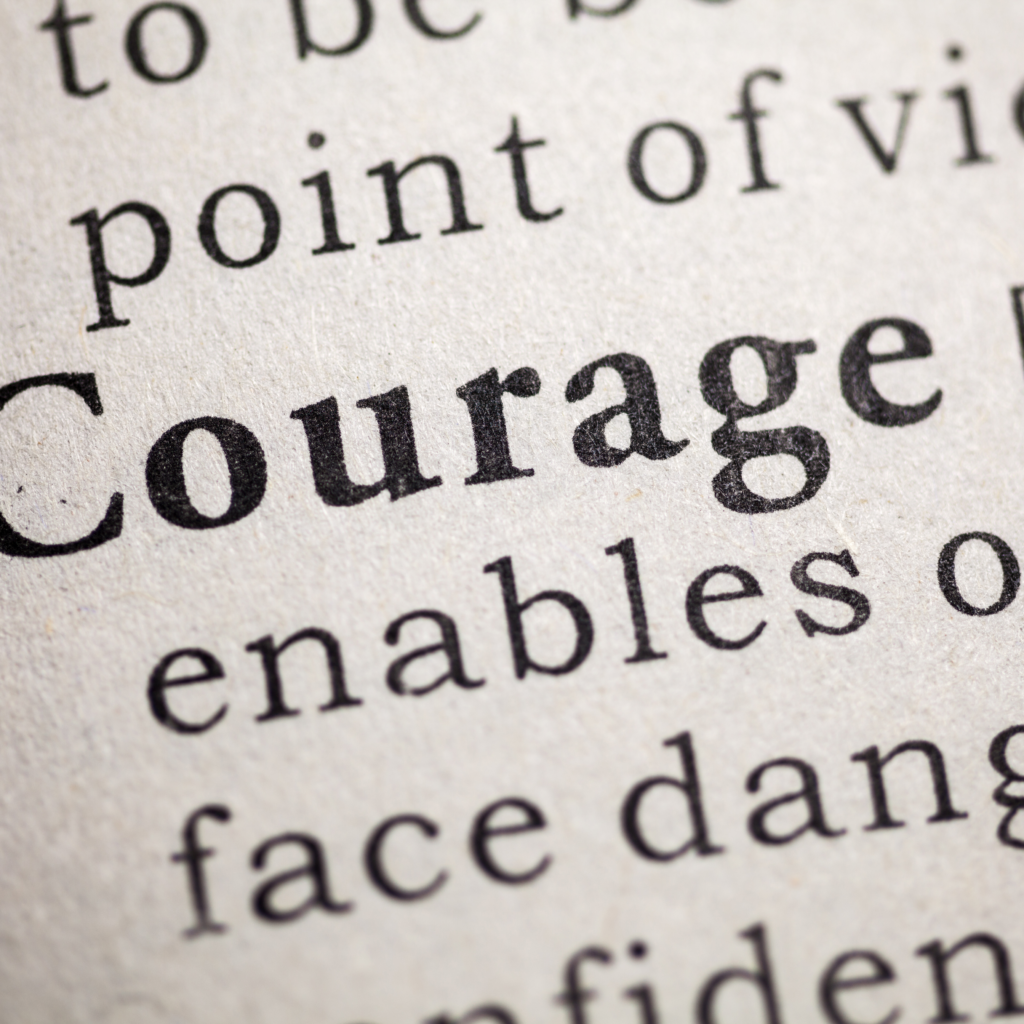
How does Origin Unity’s one word mindfulness meditation program work?
The beauty of the One Word Mindfulness Meditation lies in its flexibility. Here’s a sneak peek at the structure:
- Weekly Themes: Each week, a calming video guide leads you through a chosen word, offering context and inspiration. Think “courage” one week, “gratitude” the next, allowing you to explore different aspects of mindfulness.
- Daily Dose of Reflection: Receive journaling prompts and a “How to Put it into Practice” guide alongside the video, empowering you to integrate the theme into your daily life.
- Community Connection: Optional group discussions (in-person or virtual) facilitate shared experiences and peer support, fostering a sense of connection and belonging.
- Resource Haven: Access a central repository of all videos, guides, and discussions, allowing you to revisit and deepen your practice anytime.
5 Powerful Perks of One-Word Mindfulness Meditation (Science Says So!):
- Stress Slayer: Mindfulness meditation, including One-Word, is proven to combat stress and anxiety, rivaling therapy! (JAMA, 2019)
- Focus Fighter: Say goodbye to mind-wandering! One-Word’s mindful approach sharpens focus and boosts productivity. (Frontiers in Psychology, 2017)
- Emotion Master: Tame your emotions! One-Word helps regulate feelings, leading to calmer reactions and increased resilience. (American Journal of Psychiatry, 2013)
- Self-Awareness Sensei: Become more self-aware! One-Word strengthens brain connections, helping you understand yourself better. (JAMA Internal Medicine, 2014)
- Sleep Savior: Can’t sleep? One-Word meditation can be your answer, offering restful and restorative repairing of the body and mind overnight -remember this priority number out of: movement, nutrition, detox and stress management because we spend 1/4th- 1/3rd of our life sleeping, and it makes everything else possible.
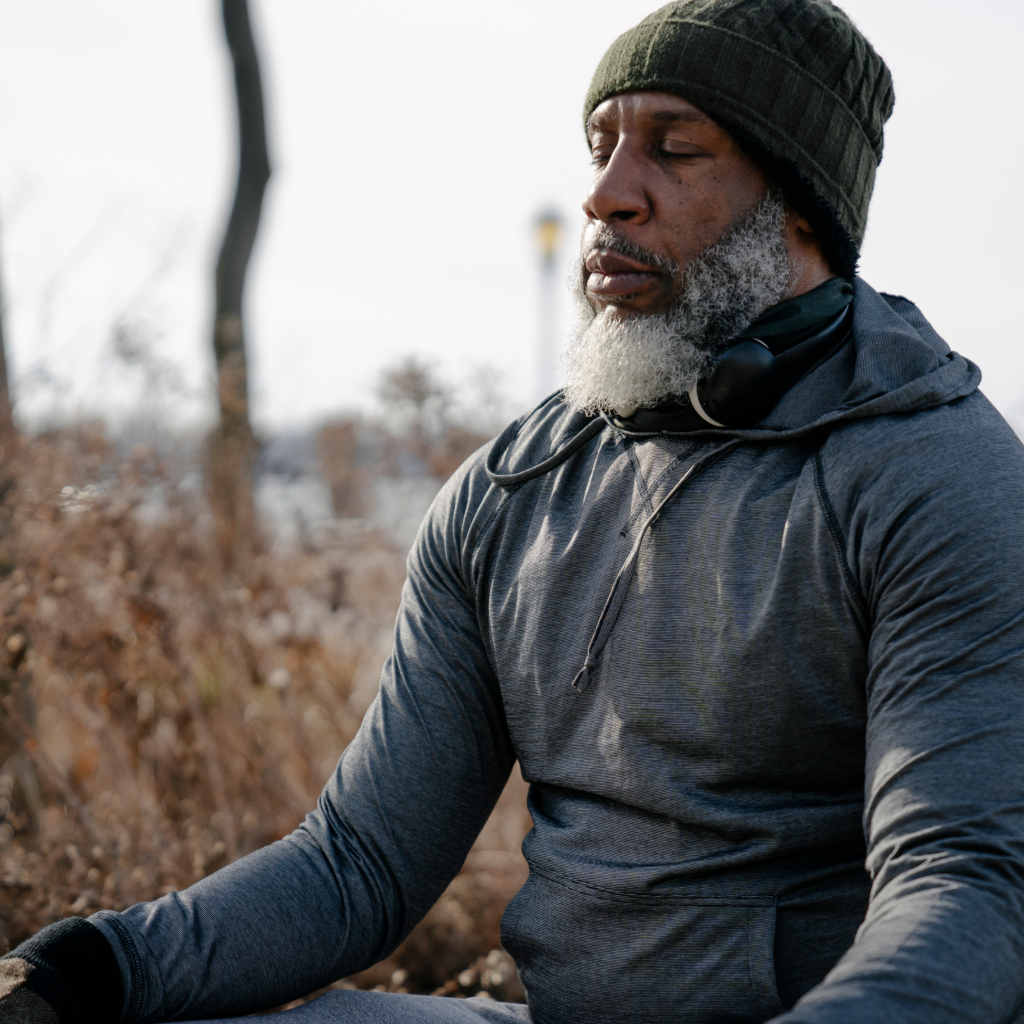
The Benefits of Mindfulness Practice:
Calm Your Body: One-Word reduces inflammation, potentially shielding you from chronic diseases (Brain, Behavior, and Immunity, 2013).
Manage Pain: One-Word can help manage chronic pain, potentially reducing reliance on medication (Pain Medicine, 2016).
Empathy Boost: One-Word cultivates compassion and empathy, strengthening social connections (Journal of Neuroscience, 2010).
Happy Gut: One-Word might improve gut health and digestion by reducing stress (Neurogastroenterology & Motility, 2019).
Move More: One-Word motivates you to get active and enjoy movement (Medicine & Science in Sports & Exercise, 2018).
Simple and Accessible: Anyone can do it, anywhere, anytime.
Why should we practice mindfulness and affirmations in the workplace?
Teamwork:
- Deeper Communication: Enhance active listening & collaboration (Journal of Business Psychology, 2022).
- Calmer Conflicts: Reduce reactivity & improve conflict resolution (Mindfulness, 2020).
- Boost Creativity: Spark innovative solutions with increased cognitive flexibility (Harvard Business Review, 2019).
- Build Trust & Empathy: Strengthen social bonds through shared mindfulness (Journal of Personality and Social Psychology, 2018).
- Sharper Decisions: Enhance focus & reduce biases for clearer outcomes (Nature Neuroscience, 2017).
Performance:
- Beat Stress & Burnout: Improve well-being & performance (JAMA Internal Medicine, 2015).
- Master Time: Sharpen focus & manage tasks effectively (Mindfulness, 2016).
- Emotional Intelligence: Elevate self-awareness & interpersonal skills (Journal of Management Education, 2019).
- Bounce Back Faster: Build resilience & overcome challenges (Journal of Occupational Health Psychology, 2018).
- Stay Motivated: Rejuvenate with short mindfulness breaks (International Journal of Stress Management, 2020).
A Guided Meditation for Turning Awareness into Action
Think of the One Word Mindfulness Meditation as a mini-vacation for your mind. Choose a word that resonates with you today, find a quiet spot, and give it a go. You might be surprised at the calmness and clarity it brings.
Remember, consistency is key. The more you practice, the more you’ll experience the benefits of this simple yet powerful technique. So, why not start today and see where one word can take you?
This is just a glimpse into the world of the One Word Mindfulness Meditation. Discover the full program’s structure and benefits by contacting us today! We’ll be happy to guide you and your organization to mindful well-being.
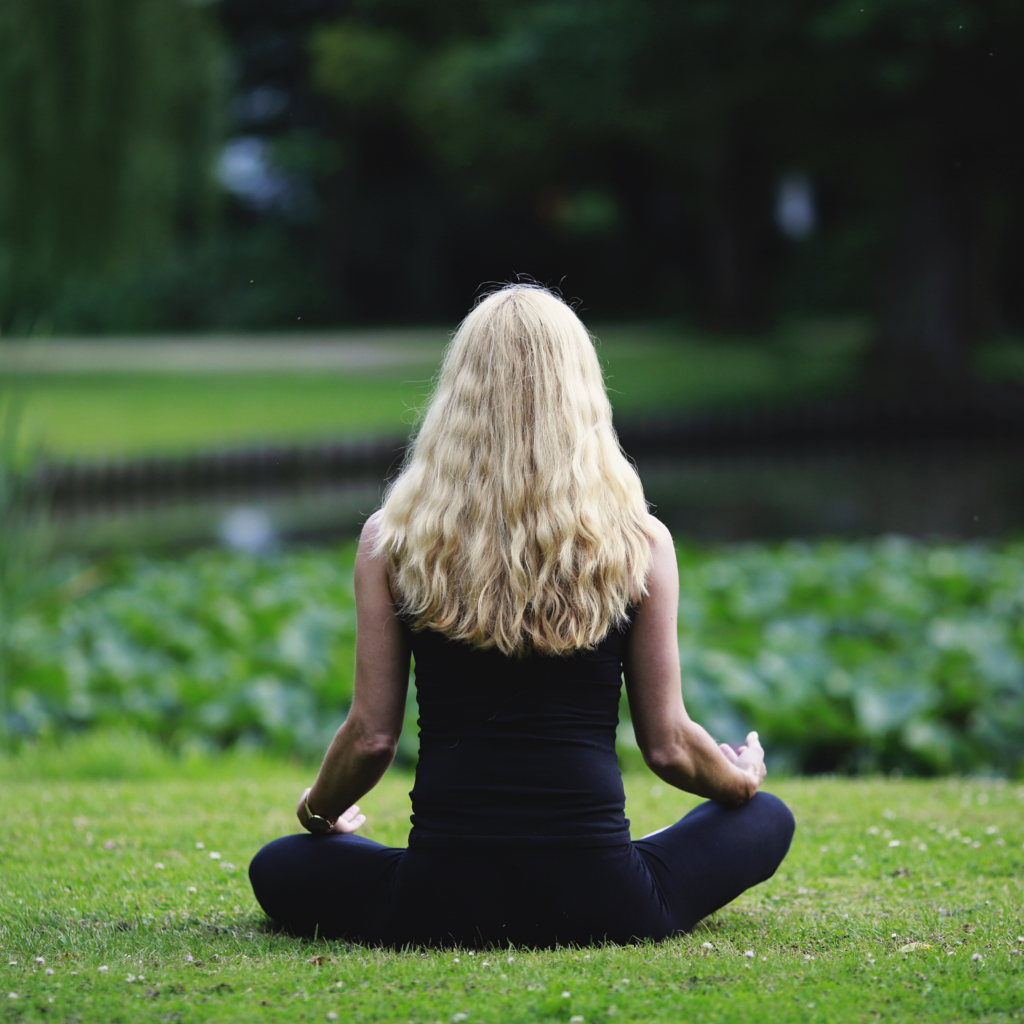
Integrated Living Practice Categories: A Comprehensive Mindful Wellness Program
In our supersonic and chaotic world, the need for holistic well-being has led many individuals to explore various practices that promote a harmonious balance between the mind, body, and spirit. Integrated Living Practice Categories encompass a diverse array lifestyle routines and practices designed to enhance overall health and cultivate a sense of inner peace. In this short explanation, we will delve into the transformative realms of meditation, mindfulness, breathwork, energy movement and channeling (Qi Gong and Yoga), catharsis, and earth-based practices.
Unlocking Serenity: Exploring the Ancient Art of Meditation
Meditation is a time-honored practice that has been embraced by many cultures worldwide, in varying forms, for centuries. It involves training the mind to achieve a state of focused attention, clarity, and inner tranquility. In the simplest terms, it means training our concentration muscles. Various meditation techniques exist, including mindfulness meditation, loving-kindness meditation, focal-point and sound syllable meditation, each offering unique benefits such as stress reduction, improved concentration, and heightened self-awareness.
Mindfulness Mastery: Navigating the Present Moment for Reduced Anxiety and Enhanced Well-Being
Mindfulness, rooted in ancient traditions, has gained widespread popularity in recent years and has been revamped through the field of positive psychology. It involves cultivating awareness of the present moment without judgment. It means experiencing what we’re doing as we do it with nothing else in mind. Mindfulness practices often include simple activities like mindful breathing, walking, eating or describing our environment. By incorporating mindfulness into daily life, individuals can reduce anxiety, enhance emotional regulation, and foster a deeper connection with their surroundings.
Breathwork Wonders: Harnessing the Power of Breath for Mental and Physical Resilience
Conscious control of the breath is a powerful tool for promoting physical and mental well-being. Breathwork techniques, ranging from deep diaphragmatic breathing and Ujjayi Pranayama to more advanced practices like Oxygen Advantage or Continuous Breathing, aim to enhance oxygen flow, reduce stress, and induce altered states of consciousness. Breathwork is often employed as a means to release emotional blockages and cultivate a heightened sense of vitality.
Qi Gong and Yoga: Balancing Life Force Energy for Holistic Health and Harmony
Qi Gong and Yoga, two ancient practices originating from Eastern traditions, respectively, focus on the cultivation and balance of life force energy. Qi Gong involves gentle movements, breathwork, and meditation to enhance the flow of Qi (energy), for promoting total wellness. Yoga, with its diverse asanas (postures) and pranayama (breath control), aims to harmonize our mental, physical, and emotional wellness. Both practices facilitate supportive movements and range of motion while balancing our breath and mind.
Catharsis Unleashed: The Transformative Power of Emotional Release Practices
Catharsis involves the release and purification of pent-up emotions and stress through expressive activities. This can include practices like art therapy, dance, or even vocal expression. Cathartic practices provide an outlet for emotions, promoting emotional well-being and aiding in the release of tension stored in the body.
Grounding with Nature: Earth-Based Practices for Physical and Spiritual Alignment
Connecting with the Earth and its natural cycles are the fundamental concepts to earth-based practices. Grounding exercises, nature walks, and rituals that align with the changing seasons are integral components. These practices foster a sense of interconnectedness with the environment, promoting physical and spiritual (personal values) alignment.
Integrated Living Practice Categories: A Holistic Roadmap to Balance Mind, Body, and Spirit
Integrative living offers a holistic approach to well-being by combining various practices that address the complexities of the human experience. By incorporating meditation, mindfulness, breathwork, energy movement and channeling, catharsis, and earth-based practices into our lives, we can cultivate a harmonious balance between mind, body, and spirit (our values, the people that surround us, and our life altogether). Whether seeking stress relief, emotional healing, or spiritual growth, the diverse avenues of integrative living practices provide a roadmap for individuals on their journey toward a more meaningful and balanced life.
Number 1 Wellness Retreats Seattle with David Reveles: A Journey to Well-Being
Seattle, WA a city surrounded by nature’s beauty and known for its vibrant culture, has become the perfect backdrop for a transformative experience in holistic wellness. Enter David Reveles, a beacon of well-being, offering individuals an opportunity to embark on a journey toward a healthier and more balanced life through his curated Wellness Retreats Seattle.
Unveiling the Best Wellness Retreats in Seattle
David Reveles doesn’t just organize retreats; he crafts immersive experiences that delve into the heart of Integrative Living Categories and Practices. Participants are invited to explore a holistic approach to rejuvenation, self-discovery, and personal growth against the stunning backdrop of the Pacific Northwest.
Embodiment Retreat in WA for Meditation and Related Practices
These retreats are more than just a break from routine; they are a chance to reset and recharge. You will be given focused time to evaluate, learn new tools and integrate it all into your life for lasting impact. From breathwork and meditation sessions to bioharmonizing activities, concepts of intentional living, mindful movement, resilience building, and mindful nutrition education, each element is carefully curated to create a harmonious blend of practices that nurture the mind, body, and spirit.
Meet David Reveles – Your Immersive Wellness Guide
David Reveles, a seasoned expert in holistic health, leads these retreats with a passion for empowering individuals on their wellness journey. His wealth of knowledge in proper breathing, nutrition, stress management, and mindfulness practices creates a transformative environment where participants can gain valuable insights and tools for a sustained, holistic lifestyle.
The Pacific Northwest Advantage
Seattle and Washington provide the ideal setting for these retreats, surrounded by lush landscapes and beautiful waters while offering a serene escape from the hectic hustle and bustle of everyday life. Participants have the chance to connect with the natural world, fostering a deeper connection with their own wellbeing and that of others.
Join the Journey Near Seattle
Whether you’re a veteran wellness enthusiast or just beginning your path to holistic living, Seattle Wellness Retreats with David Reveles offers a unique and enriching experience. Step away from the ordinary and harmonize yourself in a weekend that promises rejuvenation, self-discovery, and the tools to integrate holistic practices into your daily life.
David Reveles’ Wellness Retreats in Seattle are not just a getaway; they are a transformative investment in your well-being. Embrace the opportunity to revitalize your life amidst the natural beauty of Seattle, guided by a holistic health expert committed to empowering you on your path to a healthier, more balanced existence.
The Essential 8 Fitness Foundations A Beginner’s Guide

If we want something lasting and sustainable, embarking on a fitness journey goes beyond merely breaking a sweat. The endeavor demands a thorough grasp of the fundamental principles of fitness and a systematic training approach.
Commencing this journey can be overwhelming, especially for beginners or those starting anew. In this introductory guide, I will delve into the importance of various fitness aspects, provide evidence-based advice, and offer recommendations for building a solid fitness foundation for beginners and beyond.
In this article, we explain the 8 essential fitness foundations a beginner’s guide for building physical wellness. If you want your fitness and wellness to be as exact as possible, consider the genetics test we offer for creating your personalized holistic health plan unique to you.
We’ll also explore the key principles of fitness and how the OPT (Optimum Performance Training) model from the National Academy of Sports Medicine (NASM) can guide individuals through various stages of their fitness progression.

Fitness Foundations a Beginner’s Guide to Physical Wellness Key Concepts
1. Cardiovascular Endurance:
Cardiovascular health is the cornerstone of fitness. Activities like running, swimming, dancing and cycling not only boost heart health but also enhance stamina and overall energy levels.
2. Muscular Strength and Endurance:
Strength training is vital for building muscle strength, supporting daily tasks and basic life requirements. Muscular endurance, on the other hand, allows for sustained repetitive contractions over time, improving our functional ability to freely and comfortably move around.
3. Flexibility:
Flexibility is key to joint health and injury prevention. Incorporating stretching exercises, yoga, and Pilates will promote improved mobility and overall body feeling. Our range of motion is of vital importance and should not comprised or over-done.
4. Body Composition:
For total wellbeing, we must balance a healthy diet with cardiovascular exercise, resistance or strength training, and all other necessary key concepts of physical wellness. When we maintain safe body composition, it reduces wear and tear on our joints and skeletal system. It also allows all the internal physiology to properly function while not over-working our body. This, in turn, impacts overall health, performance, and appearance. There is health at every size, but this can vary person to person, so it is important to consider all of the above while also measuring key health markers through bloodwork if in question. Using the measures of BMI or weight alone will not give us an accurate picture of our health.
5. Balance and Stability:
Enhancing coordination and stability through exercises like yoga and balance training not only reduces the risk of falls but also supports functional movements and lowers our likelihood of becoming achy as we age.
“Each year 3 million people are treated in the hospital for fall related injuries.
Over 800,000 patients a year are hospitalized because of a fall injury, most often because of a head injury or hip fracture. The CDC states:
- Each year at least 300,000 older people are hospitalized for hip fractures.
- More than 95% of hip fractures are caused by falling,8 usually by falling sideways.
- Falls are the most common cause of traumatic brain injuries (TBI).
- In 2015, the total medical costs for falls totaled more than $50 billion. Medicare and Medicaid shouldered 75% of these costs.”
Many of us don’t think to train balance for longevity as a preventative measure for fall prevention. We must also remember that when we stop working out our muscles will atrophy and our risk for injury goes up.
In order to maintain our quality of life long-term, we must find a movement routine we can stick to.
6. Rest and Recovery:
Rest and recovery are as important as the workout itself. Adequate sleep, calming techniques like meditation or breathing techniques, and rest days are crucial for preventing overtraining and reducing the risk of injuries. You don’t need to obsess over protein, but rather, sleep and relaxation post training. Breathwork is one of the best ways to achieve fast, deep, and lasting recovery.
7. Nutrition and Hydration:
A well-balanced diet rich with a 7 vital nutrients (water, fiber, minerals, vitamins, fats, proteins, carbs) supports overall health. Staying adequately hydrated is vital for optimal cognitive performance and physical strength while also ensuring we don’t overeat if our energy or mood slumps.
8. Consistency and Progression:
Consistent exercise, combined with gradual progression, ensures sustained progress and prevents plateaus. Tailoring programs to your individual needs are key to continual improvement. It can be helpful to have professional support.

OPT Model: A Systematic Approach Starting a Fitness Routine
Developed by NASM, the OPT model provides a systematic approach to exercise programming, guiding individuals through three progressive phases:
- Stabilization Endurance (Phase 1): This phase emphasizes the development of stability and muscular endurance. You perform 12-20 repetitions per set with slower movement speeds and reduced intensity to promote muscular endurance and ensure correct form and technique. The focus is on reinforcing correct movements, enhancing joint and postural control, and coordination. This phase is suitable for everyone and involves fitness assessments to determine goals and establish baselines for training.
- Strength Endurance (Phase 2): In this phase, the focus shifts to enhancing stabilization endurance while increasing prime mover strength. You perform 8-12 repetitions per set with controlled tempo and moderate intensity to improve overall muscular endurance and joint stabilization. Ensure you have phase 1 before moving on to phase 2.
- Hypertrophy (Phase 3): The hypertrophy phase aims to increase muscle size not for a noticeable visual affect or “bulking” but simply to allow greater strength ability. The purpose is to have enough chemical capacity (muscle contraction is a chain of chemical reactions) to manage increased resistance overtime. You perform 6-12 repetitions per set with moderate to fast movement speeds and high intensity to induce muscle growth and metabolic stress.
- Maximal Strength (Phase 4): This phase focuses on developing maximal strength. You perform 1-5 repetitions per set with slow to moderate movement speeds and high intensity to enhance motor unit recruitment and maximal strength.
- Power (Phase 5): The power phase emphasizes the development of power and rate of force production. You perform 1-10 repetitions per set with fast movement speeds and high intensity to enhance neuromuscular efficiency and power output.
Fitness Program Progression: Gradually Increase Endurance and Resistance Training
Starting out, we follow a natural progression and cyclical pattern:
- Assessment: Conduct an initial assessment to determine the current fitness level, identify imbalances, and set specific goals. Assess at every workout how you feel before and after, evaluate progress periodically and adjust as necessary.
- Stabilization Phase: Start with balance, coordination and stability and progress through movement pattern exercises, all while respecting your current level.
- Strength Phase: We will progress as our stability and neuromuscular control improves. Focus on building muscular strength with increased resistance. Strength has two phases:-Endurance: refers to the ability of muscles to sustain prolonged or repeated contractions over an extended period. The focus is on higher repetitions with lower weight. -Hypertrophy: the process of increasing the size of muscle cells through increasing resistance and moderate repetitions, resulting in muscle growth.
- Power Phase: Advance to the power phase for those seeking enhanced athletic performance or power-related goals. This means higher weight and greater exertion with less or minimal reps. Some people skip this phase and focus on the preliminary ones as it can risk injury and should only be performed once you’re ready, have ample experience, and foundational fitness.

Considerations for Successful Workout Routine:
- Individualization: Tailor fitness programs based on age, fitness level, and goals to ensure optimal results.
- Continuous Assessment: Regularly evaluate progress and adjust the program to meet evolving needs.
- Periodization: Systematically vary intensity and volume for optimal adaptation and sustained performance gains.
Listen to Your Body
“Listening to your body” is a fundamental principle of holistic health and fitness. I urge individuals to attune themselves to various signals and cues for informed decision-making. Our movement must be natural and fluid and not over-bearing.
This involves distinguishing between normal discomfort and potential back or body pain during exercise, understanding the importance of rest and recovery to prevent overtraining, and recognizing the mental well-being impact of physical activity.
Monitoring the body’s adaptation to training helps in adjusting workout intensity and volume, emphasizing gradual progression to avoid burnout and injuries.
Paying attention to hunger and fullness cues contributes to a balanced diet, while staying hydrated is essential for optimal bodily functions.
Additionally, incorporating stretching and mobility exercises based on how your body feels enhances flexibility and reduces stiffness. Overall, actively listening to your body allows for an individual and sustainable approach to fitness, continued personal growth, and promotes long-term health and well-being.

Stay Motivated on Your Personalized Fitness Journey
Commencing our fitness quest is a dynamic and evolving process. Whether it be on our own, with friends and family or at our corporate environment; we must consider all of the above information to stay safe and live well. By understanding the foundations of fitness and incorporating the structured approach of the OPT model, we can create a personalized and effective fitness plan.
Always consult with fitness professionals for tailored guidance, ensuring a holistic and enjoyable path toward optimum performance and well-being.
Remember, fitness is not just a destination; it’s a lifelong commitment of self-improvement and well-being.
Start your journey today and reach out to Origins Unity LLC with any questions!
Wellness is Wholeness: The One True Path to Wellbeing

The concept of wellness has evolved beyond physical health and keeping your insurance premiums low. It now encompasses a whole-person approach that recognizes the intricate interplay among the most vital aspects of our lives.
The idea here is that Wellness is Wholeness (the terms are synonymous) and they emphasize the importance of integrating all necessary and applicable parts to create a cohesive and fulfilling existence.
In our rapidly accelerating world, we are spread thin and are easily fragmented. Being scattered across digital platforms, life commitments, and ensuring ourselves and loved ones are happy and whole is an ongoing endeavor. The solution is understanding that wellness is wholeness. We must constantly ask ourselves – what makes us whole? Let’s now explore the significance of embracing wholeness as a key to achieving true wellbeing through assimilating all necessary parts and domains.
“Health, wellness and wholeness is a lifelong process. It is understanding and connecting to the many sides of yourself, leading to a deep understanding and acceptance of your inner wisdom and to finding the balance that supports your life.” (Dossey, 2013)
Explain How Wellness is Wholeness
Wellness is Wholeness, encapsulates a philosophy advocating for a comprehensive approach to health that acknowledges the interconnection of the mind, body, and spirit. This concept promotes the idea that true well-being is achieved when these dimensions are in harmony. It urges individuals to consider various aspects of their lives, emphasizing preventative measures, lifestyle choices, family time, inner joy and practices that address the root causes of health issues. By embracing a proactive role in health, individuals can cultivate a balanced and gratifying life, moving beyond mere symptom management to a state of thriving.

What is Integrative Wellness
By properly decomposing health and wellness into smaller more-manageable parts, individuals can strive for a more complete and harmonious state of being. Wellness is wholeness means nurturing each aspect of life and personhood in a way that promotes overall balance, resilience, and fulfillment. It emphasizes a practical approach to taking care of ourselves and offers a sense of completeness in life.
It merges conventional and complementary therapies, emphasizing personalized care tailored to each-person’s needs. This method seeks to empower individuals through their wellness practices, encouraging proactive measures, preventive focus, and collaborative care involving a range of healthcare providers, holistic practitioners and all other essential people that make up one’s life.
How do the Trends of Traditional Wellness Fail Us
The concept of wholeness is presented as a departure from the relentless pursuit of self-improvement and the commodification of the wellness industry. The basis is self-acceptance and an understanding that allows us to relay this onto others without fear or resistance. We can cooperate and meet other humans on an honest emotional level while still progressing in our lives and achieving our goals.
Wholeness calls for a return to balance, reciprocity, and respect for all life forms, emphasizing the interconnectedness of human health with the health of the planet and its ecosystems. This shift from wellness to wholeness involves a deeper understanding of the self, a recognition of the spiritual and ancestral dimensions of well-being, and a rejection of the notion that external standards can validate one’s sense of completeness.
In recognizing part of the industry’s over-focus on self-optimization and the exhaustive effort of perfection, we highlight the disservice of planning every aspect of life and the restrictive nature of tracking and optimizing every decision. We must emphasize the importance of embracing uncertainty, relying on inner knowing, and finding peace through resilience and equanimity in the face of life’s challenges. Meaning that we will rely on our best practices and framework while knowing and accepting things can and will go wrong.
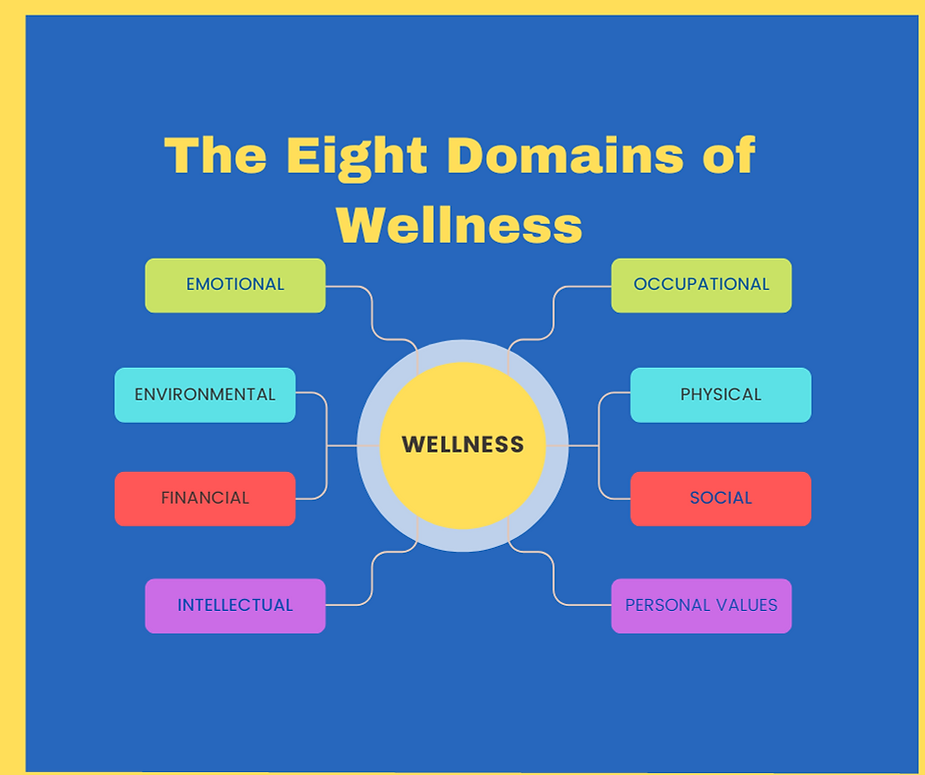
What Are the 8 Domains of Wellness
The concept of wellness is often categorized into various dimensions, pillars or domains, and while the exact pillars may vary in different models, one common framework is the Eight Dimensions of Wellness. These dimensions encompass various aspects of our lives and contribute to overall well-being. The Eight Pillars of Wellness typically include:
- Physical Wellness:Involves maintaining a healthy body through regular exercise, proper nutrition, adequate sleep, and avoiding harmful habits.
- Emotional Wellness:Focuses on understanding and managing one’s emotions effectively, cultivating resilience, and nurturing positive mental health.
- Social Wellness:Relates to building and maintaining healthy relationships, fostering a sense of belonging, and contributing to the community.
- Environmental Wellness:Encompasses creating a sustainable and supportive environment, including both the natural and built surroundings.
- Occupational Wellness:Involves finding fulfillment and satisfaction in one’s work or chosen vocation, as well as achieving a healthy work-life balance.
- Intellectual Wellness:Encourages continuous learning, curiosity, and engaging in intellectually stimulating activities to expand knowledge and skills.
- Financial Wellness:Relates to managing financial resources wisely, making informed decisions, and planning for both short-term and long-term financial goals.
- Personal Values or Spiritual Wellness:Focuses on finding meaning and purpose in life, exploring personal beliefs and values, and nurturing a sense of inner peace.
What Causes Fragmentation, Isolation and Displacement
Our life and wellbeing can face fragmentation when individuals grapple with challenges such as overcommitment without balance, inconsistent self-care practices, social isolation, and conflicting personal values. This fragmentation may also stem from inadequate integration of mindfulness, unhealthy lifestyle choices, a lack of purpose and meaning, and the neglect of mental health. These factors disrupt the harmonious interplay of different aspects of an individual’s existence, hindering the cohesive journey toward holistic well-being. We must recognize and reinforce the need for incorporating consistent self-care, fostering conscious social connections, aligning actions with values, living intentionally, making healthy lifestyle choices, and prioritizing mental health. All of this is supportive to the integrated path of how wellness is wholeness.
Living Healthy and Whole
How do we live healthy and whole? The idea is to embody a supportive lifestyle that prioritizes complete well-being across all dimensions while honoring who we are and where we come from. It means careful attention and proactive action on a regular basis. This approach emphasizes mindful choices, nourishing practices, and a harmonious balance between the most-essential aspects of life. It encourages individuals to view overall health and wellness as fostering a state of wholeness where vitality, mental clarity, and emotional resilience converge.
Through this perspective, the initiative “Living Healthy and Whole” aims to guide individuals on a transformative journey from wellness to wholeness that is first defined by their terms, while respecting the general outline of the wellness frameworks employed (8 domains, 7 pillars, or 6 dimensions).

To Be Well We Must Make Ourselves Whole
Genuine wellness arises from achieving completeness across all aspects of life—addressing physical health, nurturing emotional resilience, focusing on professional development, fostering sustainability, committing to lifelong learning and fiscal responsibility, cultivating meaningful social connections, and aligning with personal values and purpose. Making ourselves whole involves a proactive effort to integrate these dimensions, while recognizing their interdependence.
By embracing the holistic approach, individuals embark on a continuous journey toward authentic well-being, where each facet contributes to a harmonious and satisfying existence. In the quest of wellness, the guiding principle is the concept of wholeness, recognizing and integrating diverse facets—physical, mental, emotional, social, intellectual, professional, worldly, cultural, as well as values and virtues. Embracing wholeness is an ongoing pursuit toward a more meaningful and balanced life, acknowledging and integrating all the necessary parts that make up the intricate mosaic of our existence.
In summary, wholeness encompasses a movement towards greater integrity, health, and communion, as well as a recognition of the essential imperfection and grace inherent in everything. It involves an interior sense of completeness and sincerity, and it holds a special quality that extends beyond the commercialized notions of wellness.
Ultimate Guide for Workplace Health: Unleashing the Potential of Your Corporate Wellness Program

Ultimate Guide for Workplace Health: Unleashing the Potential of Your Corporate Wellness Program
Ready for a wellness journey that’s more than just buzzwords? Welcome to Origins Unity, where we’re flipping the script on well-being. It’s not about the usual drill; it’s about diving into everything that makes life worthwhile and manageable. We need models and frameworks that are more than theory and something we can bet our life on. How do we organize all of this in one place and ensure it makes sense for each individual person and the entire organization? By having a trusted wellness consultant take you through the Eight Domains of Wellness outlined in the Ultimate Guide for Workplace Wellness. This means a whole-person, multi-dimensional systems-approach to achieving good health and lasting wellbeing that will continually evolve.
By outlining health goals, sequencing the right wellness activities, and promoting company benefits, we will transform the workplace culture and ensure a healthy workforce. Our Corporate Wellness Program isn’t your typical health kick; it’s a lifestyle overhaul and the creation of a wellness culture. The available downloadable Ultimate Guide for Workplace Health isn’t just a booklet; it’s your ticket to a more meaningful, balanced, and empowered life for you and your community.
Health and Wellness Program Best Practices
Implementing a successful health and wellness program involves a strategic approach. Begin by conducting a comprehensive assessment of employee health needs, ensuring their active involvement in the planning process to align with preferences. Establish clear, measurable goals and communicate them effectively through a well-rounded strategy. Offer a holistic range of initiatives covering physical, mental, and nutritional well-being, encouraging participation with incentives and recognition. Prioritize accessibility, making sure that wellness activities cater to all employees.
Provide educational resources and foster partnerships with local resources. Regularly evaluate the program’s effectiveness and secure leadership support for a positive culture. Design the program with long-term sustainability in mind and consider the eight domains of wellness: personal values, physical, emotional, social, environmental, intellectual, occupational, financial. Embrace Origins Unity, a personalized wellness journey tailored to individual needs, transcending cookie-cutter approaches for a sustainable and meaningful impact.
Let’s redefine wellness together, making it not just a plan but a personal-legacy and sustainable reality that aligns seamlessly with your team’s rhythm and ultimately creates culture.
It is important to consider all of this while operating through a formal set of industry best practices and considerations:
- Assessment and Analysis
- Employee Involvement and Input
- Clear Goals and Objectives
- Comprehensive Communication
- Holistic Approac
- Incentives and Recognition
- Accessibility and Flexibility
- Educational Components
- Partnerships and Resources
- Regular Evaluation
- Leadership Support
- Long-Term Sustainability

What is Wellness and a Workplace Wellness Program:
Alright, let’s kick things off with a chat. We want to get to know you and the people you’re hard at work leading forward. It all begins by us listening to your goals and current state. We’re not going to be throwing jargon at you; it’s just a conversation. We then provide the right tools, assess your well-being, and set personal and group or organizational-wide objectives.
Transforming the work environment for the better means encouraging healthy lifestyle choices in all ways possible, providing access to wellness benefits, and fostering a supportive work environment all play pivotal roles. Recognizing the interconnectedness of employee well-being and overall organizational success, investing in health and wellness initiatives becomes a strategic imperative for cultivating a motivated, engaged, and resilient workforce. This requires a wellness consultant that isn’t a robot; instead, they are a guide to making workplace wellness accelerate learning, growth, and fulfillment.
The Workplace Wellness Lifecycle and Corporate Wellness Solution:
The Ultimate Guide for Workplace Health starts with the Worksite Wellness Lifecycle Solution and encompasses a strategic journey that begins with securing executive sponsorship, creating a dedicated team or committee, and conducting thorough research to identify specific organizational needs. Subsequently, the process involves crafting clear goals and objectives aligned with the identified needs, fostering a supportive workplace environment, and developing a robust action plan for effective implementation.
The final stage is the critical evaluation of outcomes, ensuring a dynamic and responsive approach to employee wellness. All of this should be performed through a collaboration between a credentialed wellness consultant and your personnel. By navigating through these stages, organizations can establish a culture that prioritizes health and wellbeing, resulting in a resilient and thriving workforce.

What is Wellness and a Workplace Wellness Program:
Wellness means functioning optimally in the environment you’re in. Wellness is a dynamic and personally defined collection of lifestyle practices and values aimed at fostering optimal health and fulfillment. It goes beyond a static concept, actively guiding individuals toward realizing their full potential. This journey is facilitated through a dual commitment to personal wellness and the support of surrounding communities.
Wellness signifies balance, effort and managing life in a conscious and sustainable way that considers the entire person and all related facets of one’s livelihood. It isn’t about diet trends and yoga poses; it’s about seizing the opportunities at hand and working towards mastery over our life.
A wellness program is strategically designed to foster a supportive workplace culture, promoting healthy behaviors and improving employees’ quality of life. By offering a range of resources, activities, and support mechanisms, a Workplace Wellness Program aims to create an environment that prioritizes and nurtures the holistic health of its workforce. The ultimate goal is to cultivate a more engaged, satisfied, and productive workplace.
We have the wisdom from the National Wellness Institute and the research and best practices from countless other organizations like: WHO, Global Wellness Institute, CDC, APA, Pubmed, CORE, ScienceOpen, and more. There’s no one-stop-shop; it’s an ongoing adventure.
The Knowledge Hub for an Employee Wellness Program:
Now, about that goldmine of wellness wisdom—we call it the Knowledge Hub. A centralized wellness repository will house all materials, ensuring easy access for employees at any time. This transforms our workplace into a dynamic learning organization, fostering continual evolution, growth, and improvement. The future belongs to companies that embrace a learning-centric approach—those capable of harnessing the collective experiences, satisfaction, knowledge, and connections embedded within the organization.
Enriched learning and growth opportunities not only empower individuals but also cultivate a collaborative community spirit, significantly enhancing everyone’s capacity to succeed and even more so within a shared workspace. It’s not just a boring library; it’s where the magic and transformation happens. We’re turning your workplace into a growth-mindset organization of highest-resourcefulness. Are you ready to evolve, grow, and enable your team or enterprise to become the best version of itself? This is the answer.

Why a Workplace Wellness Initiative May Fail:
A workplace wellness initiative may face challenges such as lack of employee engagement, poor communication, insufficient leadership support, unclear goals, and a one-size-fits-all approach. Ineffective program design, resistance to change, and inadequate resources further contribute to potential shortcomings. Many wellness programs falter because they miss the mark and lack personalization. A one-size-fits-all approach often leads to failure, emphasizing the importance of getting down to the nitty-gritty. It’s crucial to use the right framework, and this is where a wellness consultant becomes invaluable. They support internal resources in creating a tailored program that meets individual needs, ensuring personalization and long-term success for all of the talent within your eco-system.
Whole-Person Approach to Encourage Employee Wellbeing:
Promoting employee wellbeing isn’t confined to step counts, waste pickups, and posting pictures of healthy meals; it’s a holistic lifestyle that’s centered around what brings you joy, meaning, and raises your quality of life. Our commitment goes beyond rhetoric; we exemplify the Whole-Person Approach, a meaningful understanding of the comprehensive picture of life and all that it has to offer. We have the lived experience as well as the theoretical basis and scientific foundation.
Similar to a puzzle, individual, family, organizational, community, and social systems seamlessly converge when we use the 8 domains framework. We’re dedicated to unraveling what motivates each of us, ensuring sustainability. The way to make this happen is with our 8 Domains Quick One-Sheet Action Plan—a no-nonsense guide to conquering wellness goals. It’s all about balance, relevance, and fostering intentional living.
Action Plan:

Assessment for Successful Wellness Program Outcomes:
Let’s get down to the nitty-gritty—assessment time. It’s about understanding your well-being needs, spotting potential roadblocks, and tailoring wellness plans that actually make a difference. It’s not a one-time thing; it’s an ongoing journey of continuous evaluation and opportunity.
The Basic Overview of Company-Wide Assessment
Surveys, health screenings, and questionnaires solicit insights into health behaviors across various domains, while Health Risk Assessments identify specific health risks. Biometric screenings measure physical indicators, and focus groups or interviews offer qualitative feedback. Participation metrics track engagement, and absenteeism data correlates with wellness involvement. Organizational culture assessments evaluate the integration of well-being into the workplace ethos. Ongoing employee feedback channels and benchmarking provide additional perspectives. This multifaceted approach allows organizations to tailor interventions, track progress, and continuously refine their wellness initiatives.
Within the framework of the eight domains, individual assessments for each wellness category empower participants to effectively navigate their well-being journey, granting them control over tracking progress and the option to share it within a group format or coaching session.
The overall assessment process is not only a diagnostic tool but a proactive measure to enhance overall program effectiveness and promote a culture of continuous improvement.
What Are the Various Dimensions of Ultimate Guide for Workplace Health?
Occupational Wellness:
Your job satisfaction matters, and we’re here to make sure you love what you do. It’s not just about a paycheck; it’s about finding purpose and growth in your work.
Intellectual Wellness:
Let’s keep those brain cells buzzing. Learning and growing aren’t just for school; it’s a lifelong adventure. Get ready to challenge your mind and amp up your curiosity.
Emotional Intelligence:
Feel the feels, folks. Emotional well-being is more than just a buzzword. It’s about recognizing and owning those emotions while keeping your cool.
Social Wellness:
Work is a team sport, and we’re all about fostering those connections. Say goodbye to cubicle isolation; it’s time to build relationships that matter.
Personal Values:
Ever wondered what really matters to you? It’s not just about work; it’s about aligning your values with your life. Get ready to discover your purpose and satisfaction.
Physical Health:
Your body is a powerhouse, and we’re here to keep it running like a well-oiled machine. From workouts to nutrition tips, we’ve got your back on the physical wellness front.
Financial Literacy and Resilience:
Let’s talk money matters. It’s not just about earning; it’s about managing and planning for the future. Get ready to take charge of your financial wellness.
Environmental and Eco-System Organization:
We’re not just about personal wellness; it’s about the big picture too. Creating a sustainable work environment is our jam. It’s about being eco-conscious in the workplace.
Domain Review:
It’s time to play favorites. How do you rate each wellness aspect in your life? This isn’t just a checklist; it’s about digging deep and figuring out what truly matters to you.
Wellness Inventory:
Ready for a deep dive? Our inventory isn’t just about numbers; it’s about understanding your work practices and crafting a wellness strategy that fits like a glove.

Employee Engagement:
Fostering employee engagement is a cornerstone of a vibrant workplace. Make your people feel valued and let them know you want to hear from them on a regular basis. Implement strategies that create a sense of purpose, connection, and fulfillment. Encourage open communication channels, providing regular feedback and recognition for achievements. Facilitate professional development opportunities and skill-building initiatives to empower employees in their roles. Promote a positive work culture through team-building activities and inclusive practices.
The best corporate wellness program will increase employee experience while working making folks feel valued and heard. This will improve employee health and worksite wellness. This is a continuous journey, requiring genuine efforts to understand and meet the diverse needs of your team, ultimately contributing to a thriving and motivated workforce.
Employee Wellness Program Ideas
Revitalize your workplace with a dynamic employee wellness initiative. Implement interactive virtual wellness workshops, foster a culture of gratitude with daily appreciation posts, and launch “Random Acts of Kindness” challenges to enhance team morale. Introduce “Wellness Wednesdays” with themed activities, from guided meditation sessions to light-hearted or educational webinars and team-building fun, catering to diverse well-being preferences.
Cultivate a supportive environment by organizing virtual book clubs centered around well-being literature and hosting virtual “Lunch and Learn” sessions on topics like work-life balance and personal development. Encourage employees to share their well-being journeys through a designated central place of communication and collaboration, fostering a sense of connection and inspiration. By embracing these varied approaches, you’ll create a workplace where well-being is woven into the fabric of daily work life, fostering a thriving and resilient team.
Corporate Wellness Program Evaluation
Evaluating the effectiveness of a corporate wellness program is crucial for ongoing improvement and ensuring it aligns with organizational goals. Employ a comprehensive approach by analyzing both quantitative and qualitative data. Assess participation rates, health metrics, and employee feedback to gauge the program’s impact.
Conduct surveys or focus groups to gather insights into the participant experience. Compare collected data against baseline measures to identify trends and areas of success. Regularly analyze the outcomes to inform adjustments, emphasizing successful elements and addressing any challenges. This iterative evaluation process ensures a responsive and adaptive approach, maximizing the positive impact of the corporate wellness initiative on employee well-being and overall organizational health.

A Message From Origin’s Unity:
As we wrap up this short exploration of what wellness means, and how to create a corporate program, let’s take a moment to reflect on what’s most essential for us. Everyone’s wellness looks different, and it will look different day-to-day too. All things considered, where do we go from here? It’s time to reference the Ultimate Guide for Workplace Health and Corporate Wellness Programs.
This blog isn’t the full guide, so make sure to connect with us and we’ll send you the complete guide.
The comprehensive guide isn’t just a manual; it’s a commitment to a workplace where well-being is foundational. From aligning with organizational goals to managing mental and occupational health, creating a dynamic team, supportive environment and a culture of wellness at work, we’re in this together. Remember, it’s not just about ticking off boxes and conforming to generic requirements—it’s about letting each individual define wellness for themself and keeping the spark within us alive.
Thanks for being part of this journey. Let’s make Origins Unity a hub of well-being and success.
With gratitude, Origins Unity LLC.
